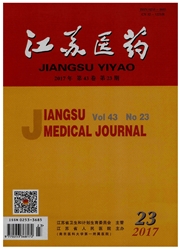

 中文摘要:
中文摘要:
目的观察兔关节软骨细胞在壳聚糖、Ⅱ型胶原、聚羟基乙酸(PGA)三种细胞支架上的生长情况,探讨更适合构建工程软骨的细胞支架材料。方法多聚赖氨酸包埋壳聚糖、Ⅱ型胶原和PGA三种多孔海绵支架。将体外分离培养的兔关节软骨细胞种植于三种支架上。体外培养4周,对组织工程软骨进行大体标本观察和HE染色,检测软骨内DNA含量、Ⅱ型胶原和糖胺多糖(GAG)的分泌量。结果软骨细胞在壳聚糖支架内生长良好,培养4周后仍能维持软骨细胞的表型,其分泌Ⅱ型胶原和GAG的能力较其他两种支架好(P〈0.01)。结论壳聚糖支架更适合软骨细胞的贴附生长,有利于维持软骨细胞的表型,是较好的软骨组织工程细胞支架。
 英文摘要:
英文摘要:
Objective To observe the ability of chitosan, type Ⅱ collagen and PGA in supporting the growth of rabbit chondrocytes, and find out better scaffold in tissue engineering. Methods Coated chltosan,typeⅡ collagen or PGA with poly-l-lysine, free chondrocytes isolated from rabbit articular cartilage were seeded onto three kinds of spongy scaffolds after expansion in vitro. After 4 weeks of culture, the tissue engineering cartilages were observed in vitro and assessed by histological staining of H-E. Then, the content of DNA and the secretion of type Ⅱ collagen and GAG in cartilages were detected quantitatively. Results Articular chondrocytes in chitosan scaffold proliferated well by contrast with other scaffolds, and maintained their phenotype throughout the culture period, which secreted more type Ⅱ collagen and GAG in contrast to other two scaffolds (P〈0.01). Conclusion Chitosan scaffold coated with poly-l-lysine can support the chondrocyte multiplication with maintenance of their phenotype, and could be a better carrier for regeneration of cartilage by tissue engineering.
 同期刊论文项目
同期刊论文项目
 同项目期刊论文
同项目期刊论文
 期刊信息
期刊信息
